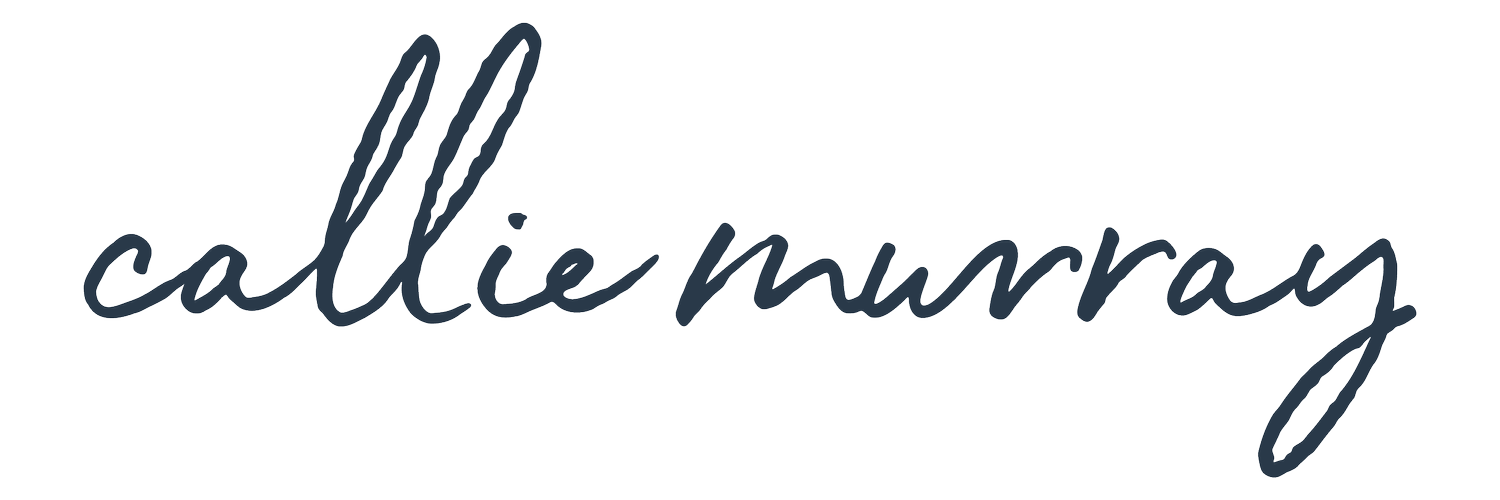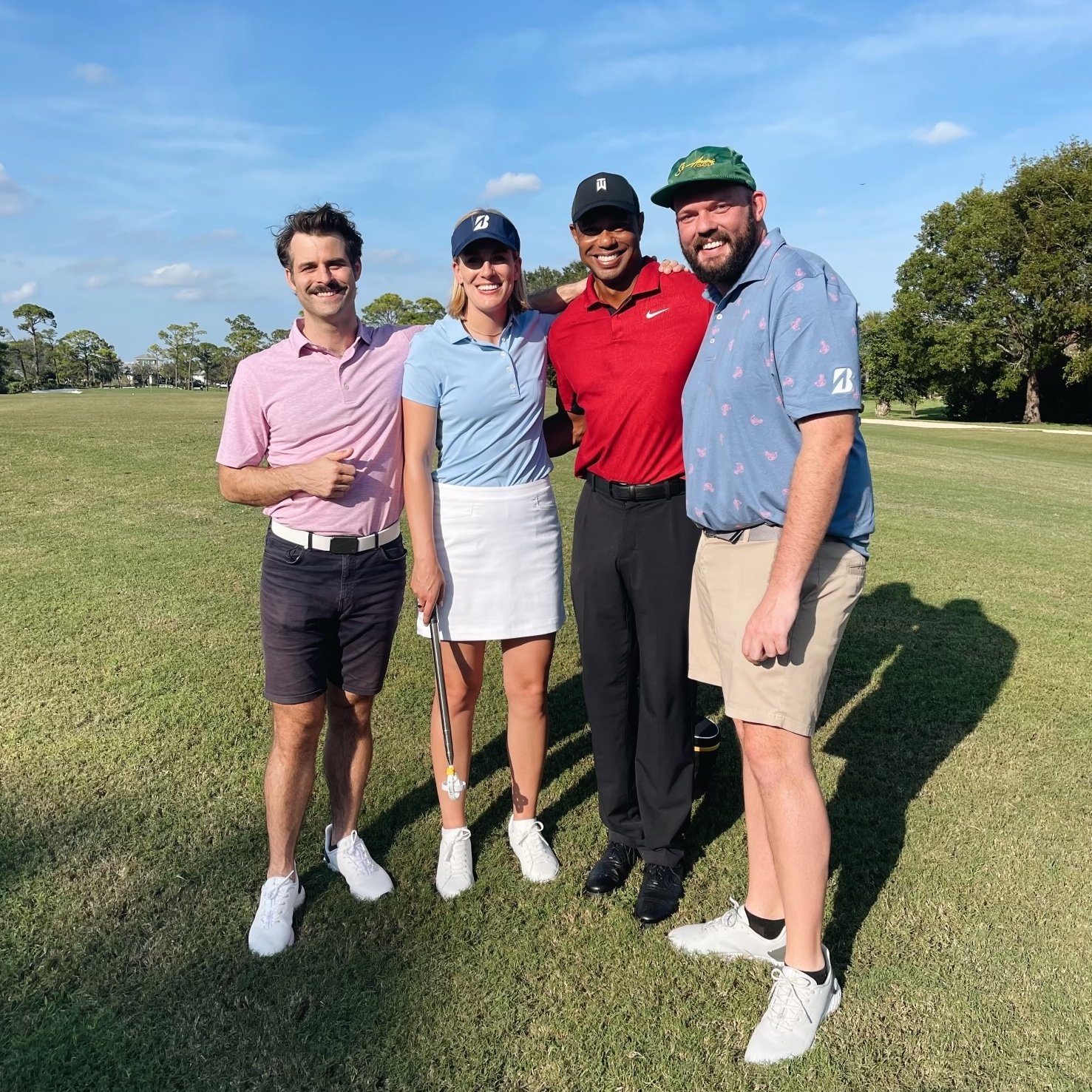Aaron from the Internet
On the day he filmed a sketch with Tiger Woods, comedian Aaron Chewning sat in a hotel bathtub and cried. He thought back to his childhood bathroom—its walls covered in golf wallpaper, a framed photo of Tiger hanging by the sink—and realized this was as full-circle a moment he’d ever had.
I know this because it’s what he sent the family group text when we asked how he was feeling.
Crying in the tub.
For as long as I can remember, my little brother has been making people laugh. My father tells the story of disciplining a three-year-old Aaron who, even as a toddler, knew how to break the tension. “I’ve got the blues,” Aaron told him, sparing himself a spanking.
In elementary school, while other families watched sitcoms together, we watched Best of Saturday Night Live VHS tapes again and again, often quoting Hans and Franz, Ed Grimley, and Dana Carvey’s Church Lady.
In high school, Aaron produced rap videos for his school assemblies in the style of then-new-to-the-scene Lonely Island. He remembers standing in the back of an assembly and listening to a room of hundreds laugh at his video, and he decided then and there to find a way to make this a career. When Lonely Island joined SNL, he had the poignant and thrilling realization that this dream might just be possible.
He attended Full Sail University in Orlando to pursue video production, and when we would meet up over breaks during those years, he would pull out his phone at dinner to jot down ideas.
“What are you doing?” I’d ask.
He’d continue to peck away at his Twitter drafts. “I’m working.”
“Social media is not work,” I’d tell him. I was the older sister who knew better. This was early into the 2000s, so at the time I was right—but fleetingly so.
Aaron gained a loyal following on Twitter and then really exploded on Vine, the social media platform built on six second videos. He amassed over a million followers (becoming a “Vine B-Lister”, as he says) and with it, a new and surprising wave of fame. We were once in an Arkansas airport after a wedding when a policeman called out to him, “Excuse me sir, what’s your name?”
We froze. “Aaron?!” he answered.
“I know! Aaron from the internet!” The officer pulled out his phone for a selfie.
Aaron was recognized more and more, and his following grew exponentially. Vine even asked him to co-write/co-direct their first scripted series, but he soon learned that series was one of their SOS efforts; Vine shut down not long after, and Aaron wondered if his budding future would do the same.
He now considers Vine’s demise the best thing that could have happened to his career; relationships he built with Vine employees while producing the series turned into freelance gigs as they went to work at AT&T and the MLB. Aaron began getting paid to produce comedic content for brands. He would send updates in our family text (we had a “no disclaimer policy”, meaning you were encouraged to brag without pretext), and our mom always said the same thing: “I never have to worry about you having fun.”
As a heart project, he wrote and recorded witty rap videos about his beloved Atlanta Braves, a few of which were played on the Jumbotron before games. One day, the Braves asked if they could hire him to create a parody song, saying they would send a former player to be in the video. They landed on Javy Lopez, who was coincidentally the inspiration behind Aaron’s peewee baseball number, #8. Our family celebrated this partnership as the absolute peak of all possible successes.
But the celebrity collaborations continued, and brands hired him to produce comedic content with increasingly bigger names. Each Christmas, I’d print a calendar for our mom with photos from the concluding year. Beside posed portraits of my family would be Aaron and T-Pain, Jennifer Lopez, Chuck Norris. When the Braves won the World Series in 2021 and Aaron wrote a song to celebrate, he was invited to be on the team bus during the Atlanta parade. The photo on the cover of that year’s calendar was of Aaron grinning wildly, his hands wrapped around the World Series trophy.
One day, Aaron mentioned an idea to make golf comedy.
“That feels like a pretty small niche,” I told him.
“You’d be surprised,” he said, and like the Twitter drafts, he began to plan. He looped in some talented friends—designer Jared Erikson, comedians Hannah Aslesen and Jonathon Pawlowski—and he built a brand poking fun at traditional golf culture while also hitting common pain points golfers of all types experienced: lost balls, awkward pairings, inappropriate comments to cart girls.
When considering the name for the brand, he wanted to honor both traditional golf culture and his hometown of Atlanta. He also wanted a name that would look good on a t-shirt. The name “St. André” checked all the boxes, with nods to St. Andrews golf course and Atlanta’s own Andre 3000 from Outkast—and it looked sick on a polo.
Aaron hypothesized that if he created well-done relatable content, the massive golf meme social media accounts would share the videos, and his following would grow organically—and fast. If his following reached a certain point, he hoped, brands would hire him to create unique content.
They launched on Instagram, Facebook, and Twitter with a bit called The St. André Rangefinder. The video was recorded with an actual camera and cameraman and edited together as if it were a true ad. “To play your best golf, you don’t need to know how far the pin is,” Aaron said in the mock infomercial. “You need encouraging words from your father.” He raised the rangefinder as the video panned a golf course. “Just look through the eyepiece, press the button, and get a few encouraging words from the one person who can make or break you emotionally.”
It went pretty viral.
He made a list of the top ten golf accounts—Zire, PGA Memes, Golf Gods—all of which were aggregators who reposted content from smaller accounts. These mega accounts each had upwards of 1M followers, proof that the market for golf memes wasn’t as niche as Aaron’s Wise Older Sister thought. Aaron’s goal was to be reposted on those ten accounts within St. André’s first six months; all ten reposted in the first week.
Two weeks after launch day, he took a screenshot of his Instagram page, showing 12 posts and 10k followers. He said that pretty immediately, his thinking shifted from, “Let’s grow this thing!” to “Let’s not eff this up!”
Brands started sending DMs, and he signed long term agreements with Bridgestone and Long Drink. They also collaborated with BODYARMOR, Top Golf, and Myrtle Beach, taking the entire team to a beach house and filming content on a handful of Myrtle’s courses. He decided to be ruthlessly thoughtful about the brands he chose to work with, only signing on with those whose products (and team) he really believed in.
He was just as judicious with his own team. He wanted St. Andre to be more than just a gig for himself; he wanted to elevate the careers of others, too. With a decade of experience in the content and creative world, he had a vast network of funny and talented people, and he decided to curate his own dream team. His HR philosophy became “sweeties only”. (He says he’s currently batting a thousand.)
Aaron just celebrated St. André’s first birthday, along with their nearly 700k followers across all channels. They continue to find new angles for videos because, as Aaron explains it, golf is just a good backdrop for comedy. He’s poked fun at relatable experiences like overbearing bosses, sleazy friends, and overly-stereotypical Texans, all with golf as the setting. He said he just as easily could have chosen something like fishing or movie-watching as the niche hobby backdrop for his comedy, but he chose golf, his own adolescent pastime. (And as Tiger Woods graces the cover of our mom’s calendar this year, I’d say it’s worked out just fine.)
I’m not going to tell you that golf comedy will change the world, but I will make a case that intentionality might. When Aaron sends the family group text an update about the latest ridiculous experience he gets to be a part of, it’s further proof that his success is not the fleeting by-product of a viral video but rather the sustained harvest of continually sowing into the craft—and, more importantly, into relationships.
And in a world where social media is in fact work now, it’s refreshing to know that Aaron From the Internet is the same Aaron that shows up to my daughter’s middle school play with flowers. He cares as much—more?—about the realized dreams of his cameraman as he does about his own, and when he and Tiger Woods are both hired for their gifts by Bridgestone—a brand he’s always used and admired—his response is not one of entitlement but of emotional, humble gratitude.
It’s that hire-by-fire-by St. André core value, I suppose. He’s just a sweetie.

